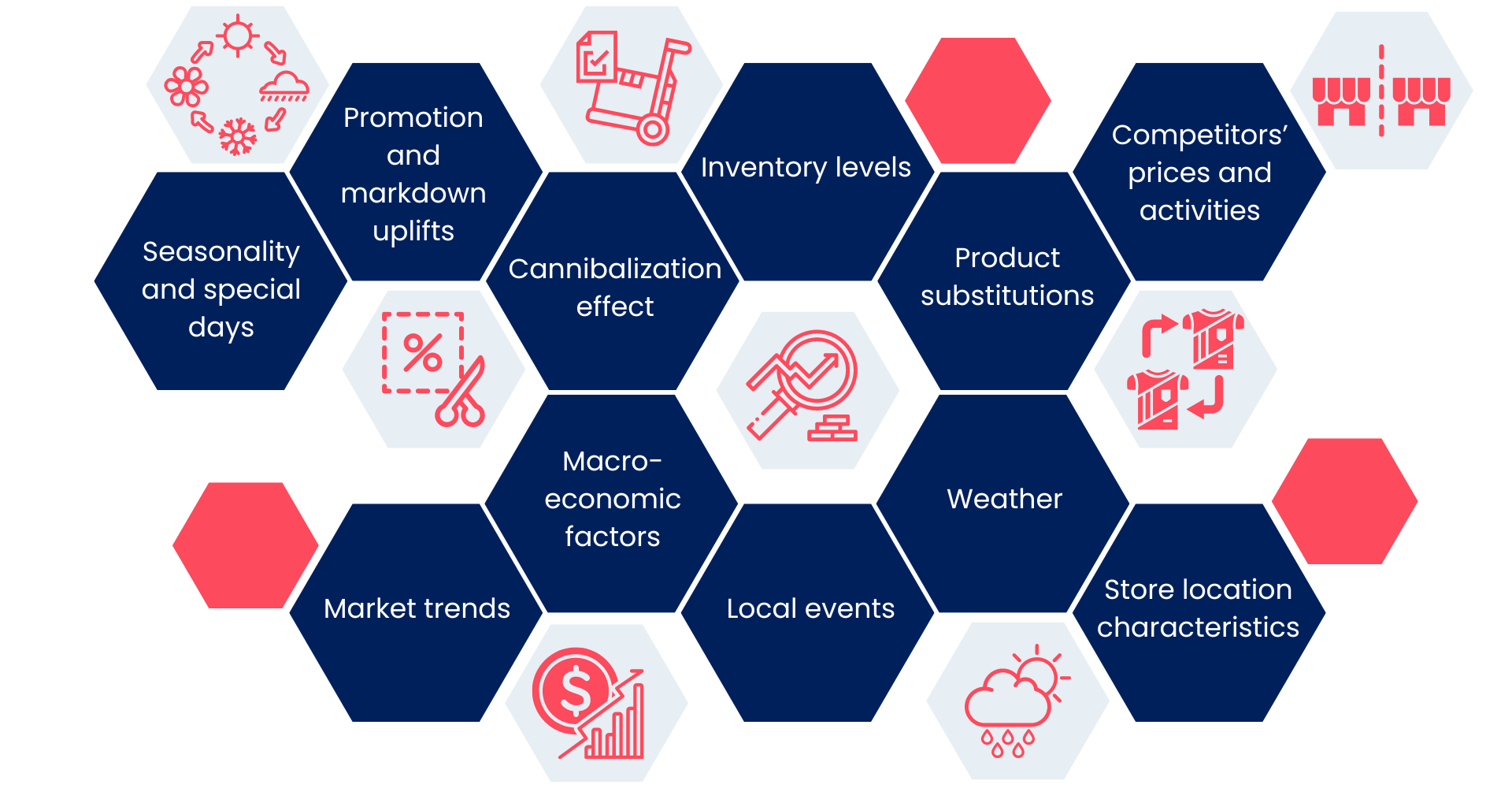
How to Measure Demand Forecast Accuracy
Introduction
Demand forecasting is the process of predicting future demand for a product or service. It is an integral part of a retailer’s strategic planning and execution. Forecasting helps retailers plan their inventory and supply chain, which are the backbone of their operations.
It allows you to better manage your inventory levels and consistently meet demand while only storing the inventory you need at a given period. For instance, when a product comes in stock, it's available for purchase by customers who want it—and not sitting on DC shelves gathering dust.
Forecasting also helps with pricing decisions: if you know what your customers are likely to buy at different times of year, then you can adjust your prices accordingly and maximize profits.
But keep in mind that forecasts will always be inaccurate to some degree. They are obviously important, but they are also inherently imperfect. A forecast’s value depends on how it can help retailers achieve other goals such as improved availability, reduced lost sales or more effective assortments.
“How Accurate Should Our Forecasts Be?”
A common question we get from our retailer customers is “How accurate should our forecasts be?” While this sounds like a straightforward question, there is no simple answer to it.
The fact is that the answer changes for different retailers, products, and stores. For instance, forecast accuracy expectations for milk or tomato cannot be similar to a slow-moving item such as a screwdriver.
Therefore, retailers need to continuously and separately assess forecast quality to identify areas for improvement for different products and stores to better manage their inventory and reduce costs. But what factors affect forecast accuracy? How do you assess the quality of your forecast and improve it? Let’s find out.
What Is Forecast Accuracy? Why Does It Matter?
Forecast accuracy is the degree to which a forecast matches actual demand. Understanding and monitoring forecast accuracy is essential because it impacts how well your organization can meet customer needs and improve its business results: the more accurate forecasts, the better decisions.
Once you have a good demand forecasting system in place, you can
- Avoid stock-outs and minimize lost sales,
- Prevent aggressive and unnecessary markdown decisions,
- Shape your inventory and pricing strategies successfully,
- Get ready for future demand fluctuations,
- Remove previous noise and outlier demands,
- And do better merchandising planning.
What Affects Demand Forecasting Accuracy?
There are many factors that affect the forecast accuracy within a company both internal and external. When external market and economic conditions are outside of the company’s control and unknowable, the plans must be built upon a set up assumptions.
But first, it’s essential to know what type of demand forecasting technique is being used, how far in advance forecasts are made, and the amount of data available from historical periods.
Below is a list of these factors you need to consider when developing your demand forecasting strategy.
- Seasonality and special days,
- Promotion and markdown uplifts,
- Cannibalization effect,
- Inventory levels,
- Product substitutions,
- Competitors’ prices and activities,
- Market trends,
- Macro-economic factors,
- Local events,
- Weather,
- Characteristics of store locations and so on.

How Can Retailers Measure Forecast Accuracy?
Measuring forecast accuracy is the process of quantifying the difference between forecasts and actuals. This gives an idea of how reliable forecasts are, providing information to help manage more accurate and reliable forecasts.
There are many ways to measure forecast accuracy, but there are two main metrics that you can use to get an idea of how accurate your forecasts are: MAPE and Bias.
Mean absolute percentage error (MAPE) is the average of the absolute difference between a forecast and the realized value. It represents the average error in percentage terms, whereas Bias measures directional deviation.
Keep in mind that inventory and planning success is contingent on 3 steps:
1. Near-zero bias at various levels of aggregation (product-chain level),
2. Correct directional response to external variables (promotions, seasonality, weather events, and so on),
3. Measure error (inaccuracy) and position the right amount of inventory accordingly.
Steps 1 and 2 ensure a robust forecasting system that tracks the change in the demand side reasonably well. Step 3 aligns the supply side to cover for the inaccuracy of the forecasts and randomness in demand.
To achieve realistic results from your demand forecasting, you need to assess the quality of your forecasts, so you can make the adjustments where necessary.
How to Improve Forecast Accuracy
Demand forecasting is a continuous challenge to retailers as every forecast is inaccurate to some degree and it will always be. Improving forecast accuracy is a good thing, but it should not be the primary purpose of demand planning and the main objective of retailers.
The focus should be on seeing the big picture from an inventory optimization and supply chain perspective and reducing the inaccuracy as much as possible. We know that more accurate demand forecasts provides a clear understanding of the future market environment and helps you to make better decisions about business operations.
One way to improve forecast accuracy is by using machine learning algorithms and advanced analytics to analyze historical sales data, various internal and external factors and predict future trends. Retailers can utilize machine learning algorithms to predict demand, which factor hundreds of potentially influencing factors in their predictions compared to human demand planners who only consider a handful.
At Invent Analytics, we help retailers achieve higher demand forecast accuracy. Our AI-powered Demand Forecasting Solution helps you forecast demand at each location and position inventory at the right amount. By increasing availability and fulfillment options, it allows you to reduce lost sales, successfully increase your order fulfillment performance and keep your customers happy.
Takeaway
Forecasting is never an end itself. In fact, even near-perfect forecasts don’t necessarily help achieving excellent business results unless there is a smooth and strong inventory planning process in place.
If you’re interested in taking your Demand Forecasting and Inventory Optimization to the next level, schedule a free demo with our retail experts today and see our AI-powered solutions in action.

Did you enjoy reading this? You might also be interested in Retail Demand Forecasting: What, How, and Why? or Returns Forecasting: A Must-Have for Retailers.



